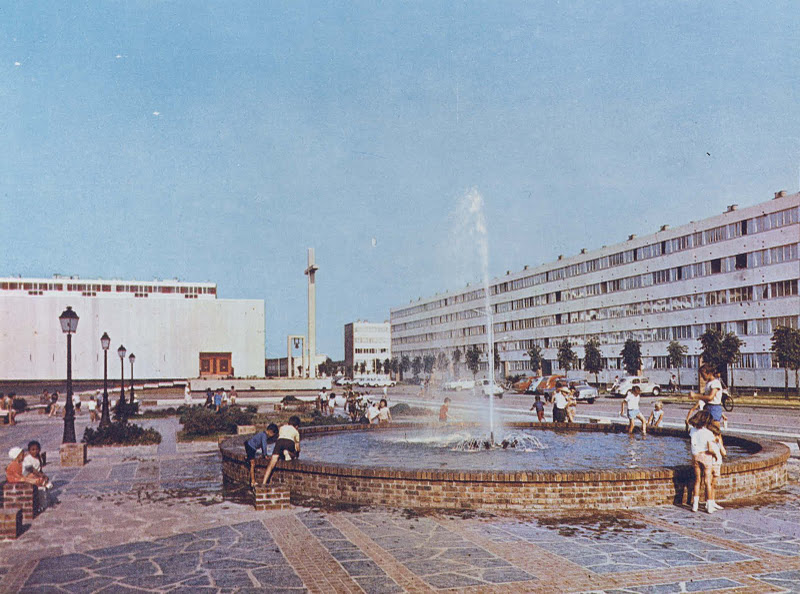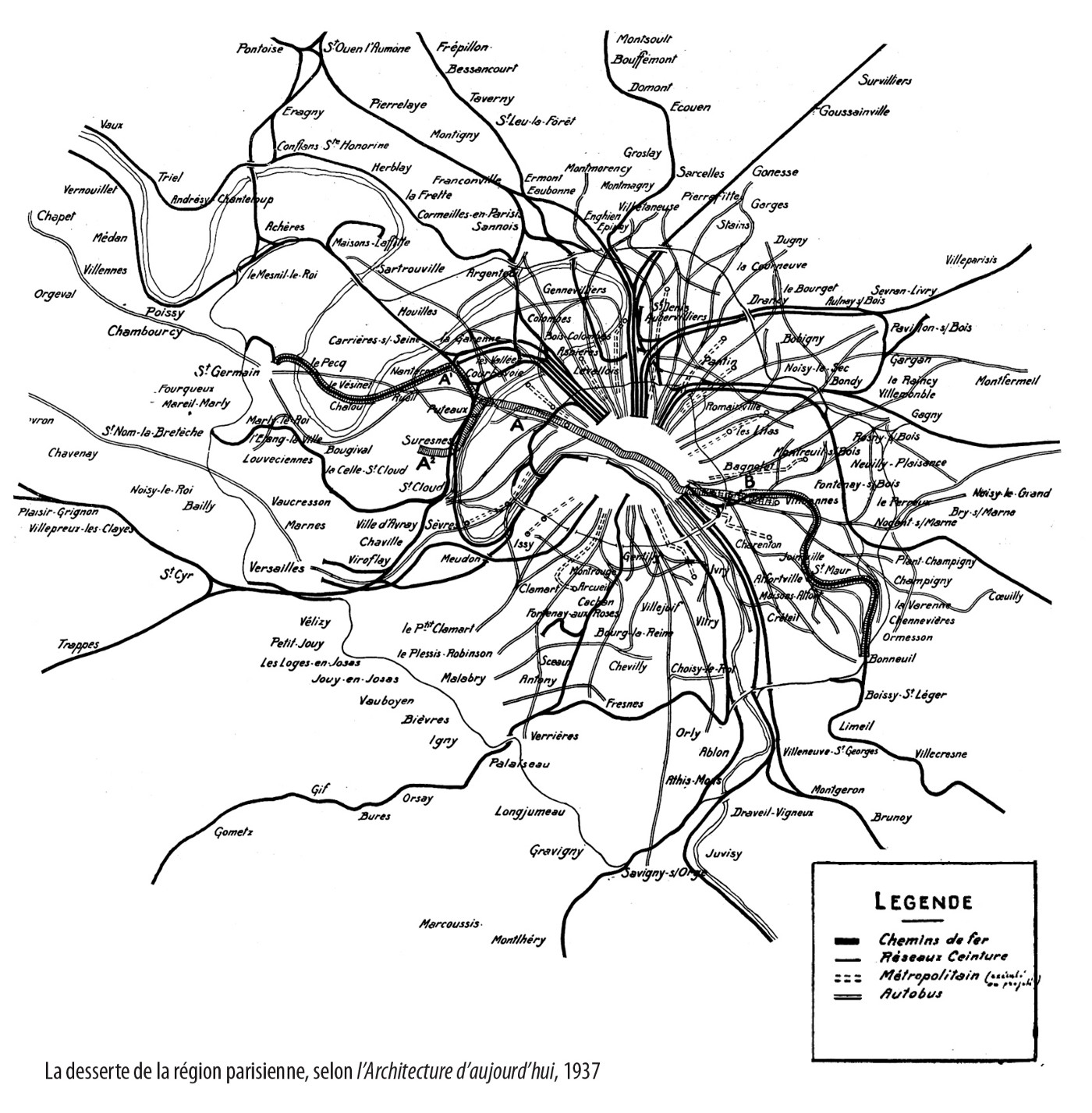The suburbs, turnkey cities?
The historical relationship between Paris and its suburbs can be envisioned as a massive hybrid, octopus-like creature, an organism innervated by a complex system of reticulated conduits serving to transport the necessary resources in and to extract waste out.
26/04/2019

The leading force overseeing the making of a city like Paris is the tension between, on one hand, a centripetal movement formed by the appropriation of both resources and living forces and, on the other hand, a centrifugal movement of production facilities and of the work force.
Paris’ periphery, a serving territory, has the vast installations required for the capital to function organically. Productive activities, services and populations are dissociated and arranged in specialized sectors amidst the multiple private enclaves laying between networks. Those networks, that slit the suburban territories in large urban ruptures and social fractures are, as they enter Paris, ironically being transfigured into proper monuments of iron, stone and glass. The vast residential or industrial holdings found in the suburbs, although dissociated from each other, have the common property of being subjected to those networks, while their land value grows as the networks develop. This dichotomy between territories and networks definitely constitutes a key-part in the suburbs’ identity definition.
This suburb -in the first place structured, dimensioned and fixed by industry before getting ravaged by its collapse- is currently undergoing radical transformation, through a process heralding a new model of urban development. After the old, slowly stratified, sometimes brutally reworked by power “center-city”, and the centralized development characterizing the post-war boom, suburban territories now hold a prized position in a new urban paradigm: the product-city, designed piece by piece by major private operators off the remains of the industrial heyday.
The turnkey city seems to be the latest emerging trend, and the suburbs are one of its preferred expression grounds.

Large private construction holdings are thus mutating and becoming the designers of global urban solutions, ranging from urban programming to transportation networks, services, public space management, communication networks, construction and real estate. The ability of such groups to adapt to new needs and local governing issues is a sign of their high flexibility, as is their ability to infiltrate any gap left vacant by public authorities. Many factors have indeed, in the recent years, upset the political balance of suburban territories: the consequences of 2008 financial crisis, the communities’ indebtedness, or the 2014 municipal elections which saw fourteen historically left-wing inner suburban towns suddenly fall to the right. In many of those suburbs, the idea of a city as a realization of a social space has been replaced by the concept of a neoliberal city, carried out by commercial-toned public policies, promoting home ownership and security as main aspirations.
Thus, this global reconfiguration of relationships between public and private operators leads the way for a radical change in the conditions for urban development.
Paris’ suburbs seem to be a highly-favorable ground for these new urban conditionsbecause of those territories’ history and organization. The public networks link together large private holdings that have mostly mutated straight from agriculture onto industry, and project a highly-polarized public/private relationship. Those networks, nowadays, sort of embody the expression of public authorities. Thus making – ever since the arrival of the railway- the interdependence between the networks’ development and urban development a true key-marker of suburban history. Today, the commissioning of the Grand Paris Express inaugurates another new phase where the new network’s stations, generally located at its intersections with the old radial lines, create multiple urban polarities.
Recently, we have seen that these urban transformations have reached a climax with the organization of this unprecedented consultation for developers: “Let’s invent the Greater Paris metropolis”. About fifty sites of public land -or theoretically controlled by local authorities- throughout the suburbs are opened to calls for expressions of interest from developers. The recipe is roughly identical to the one of “Reinventing Paris”. Afterall, it tends to become the norm. Top-heavy teams, initiated by major building groups slowly turning into proper urban developers, compose mouth-watering offers full of highly-stimulating, graphically-irresistible visuals, tailored-made for any politician’s appetite, while heavy background lobby work towards locally-elected officials eases the general adoption process.
All this urban machinery represents for elected officials an opportunity to initiate major development operations, without bearing the responsibility for it nor the need to invest public money.